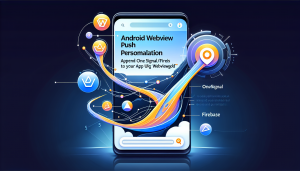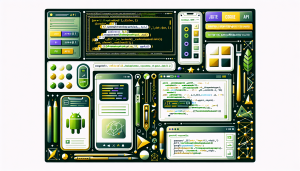
Why Pull-To-Refresh Matters in WebView Apps
When users browse content-rich applications on their mobile devices, they expect a seamless and native-like experience. One essential feature that’s become standard across many Android apps is pull-to-refresh—the intuitive gesture to reload content by swiping downwards. For developers converting responsive websites into Android apps using WebViews, implementing pull-to-refresh properly can significantly improve user satisfaction and engagement.
The Challenges of WebView and Refreshing Content
Android’s WebView component allows you to display web content within your app, bridging the gap between mobile websites and native applications. However, WebView does not offer built-in support for pull-to-refresh gestures. Without this feature, users may find it cumbersome to reload dynamic content or reflect updates from your website.
Best Practices for Implementing Pull-To-Refresh in Android WebView Apps
To deliver an experience that matches modern app standards, follow these best practices when adding pull-to-refresh to your WebView-based Android application:
- Use
SwipeRefreshLayout: Android provides theSwipeRefreshLayoutwidget as a straightforward way to implement pull-to-refresh functionality. Simply wrap your WebView inside a SwipeRefreshLayout in your layout XML. - Synchronize Gestures Carefully: Ensure that vertical scrolling within the WebView does not conflict with the pull gesture. Only trigger refresh when the WebView is scrolled to the top, preventing accidental reloads during browsing.
- Show Feedback During Refresh: Display a spinner or animation to indicate to the user that the page is refreshing, just as they would expect in any native app.
- Handle Loading States Gracefully: Use the WebView’s navigation and loading callbacks to start and stop the refreshing animation appropriately, avoiding abrupt UI changes.
- Consider Cache and Network Strategies: Control WebView caching behavior to ensure users receive updated content while preserving bandwidth and load speed.
Sample Implementation: Android Pull-To-Refresh with WebView
Here’s a simplified code example:
<androidx.swiperefreshlayout.widget.SwipeRefreshLayout
android:id=@+id/swipeRefresh
...>
<WebView
android:id=@+id/webView
... />
</androidx.swiperefreshlayout.widget.SwipeRefreshLayout>
SwipeRefreshLayout swipeRefresh = findViewById(R.id.swipeRefresh);
WebView webView = findViewById(R.id.webView);
swipeRefresh.setOnRefreshListener(() -> webView.reload());
webView.setWebViewClient(new WebViewClient() {
@Override
public void onPageFinished(WebView view, String url) {
swipeRefresh.setRefreshing(false);
}
});
This setup ensures that when users swipe down at the top of the WebView, the content is refreshed, and the loading indicator provides real-time feedback.
Accelerate Development with WebViewGold
While implementing pull-to-refresh and other native features in an Android WebView often involves additional coding and troubleshooting, there’s a quick and simple alternative—WebViewGold. This solution allows you to convert your website into a full-featured Android app effortlessly, offering built-in support for essential UI features like pull-to-refresh, push notifications, file uploads, and more, without writing complex Java or Kotlin code.
Bridging the Gap: From Website to Native-Like App Experiences
A polished pull-to-refresh mechanism can make your WebView-based app feel faster, more interactive, and closer to a true native experience. By following Android best practices—or leveraging platforms like WebViewGold—you can ensure that your website-to-app conversion delivers the responsiveness and usability your audience expects on Android. Start delighting your users with smoother navigation and fresh content, all while reducing development time and complexity.




